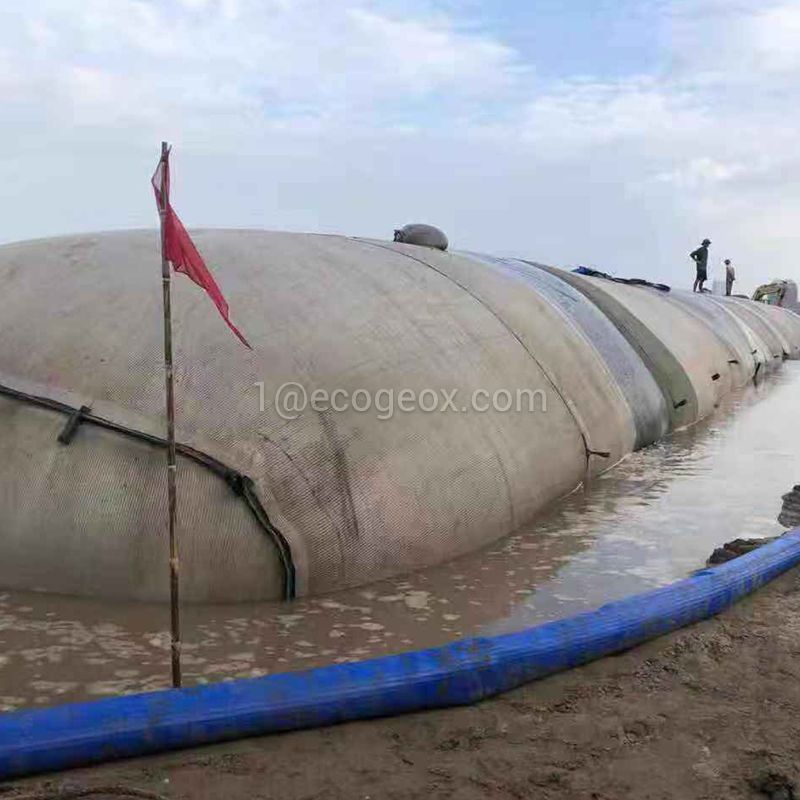Jul. 27, 2023
Construction & Real Estate
Geotubes, also known as geotextile tubes or geotextile containers, are innovative and versatile solutions widely used in civil engineering and environmental applications. These tubular structures are constructed from high-strength, permeable geotextile fabric, which allows water to pass through while retaining soil, sand, or other fill materials. Their flexibility, cost-effectiveness, and ease of installation make them a preferred choice for various projects.

Erosion is a natural process that involves the gradual displacement of soil or rock due to natural elements such as water, wind, and ice. However, human activities, including construction and deforestation, have exacerbated erosion, leading to environmental degradation and the loss of valuable land.
Geotubes play a pivotal role in mitigating erosion by acting as durable barriers against soil movement and sediment runoff. When properly installed, they stabilize shorelines, riverbanks, and coastal areas, preventing further erosion and protecting valuable ecosystems.
To maximize the effectiveness of geotubes for erosion control, a strategic installation process is essential. The steps involve site assessment, selection of appropriate geotextile fabric, and precise placement of geotubes in the targeted areas. The tubes are often filled with locally sourced materials, which makes them an environmentally friendly solution.
Sediment accumulation in bodies of water can lead to a range of environmental issues, including reduced water quality, disruption of aquatic habitats, and increased risk of flooding. Effective sediment dewatering is crucial to maintain the ecological balance of water bodies.
Geotubes offer an efficient and environmentally conscious solution for sediment dewatering. They can be placed in retention ponds, lagoons, or other water bodies to contain and dewater the accumulated sediment. As water passes through the geotextile fabric, the solid particles are retained within the tube, while clarified water is released.
Geotube sediment dewatering presents several advantages over traditional methods. Firstly, it reduces the need for costly dredging operations, minimizing disruption to aquatic ecosystems. Secondly, the dewatered sediment can be repurposed for land reclamation or other beneficial applications, reducing waste and promoting sustainable practices.
In the field of civil engineering, geotubes find extensive use in shoreline protection, slope stabilization, and construction site dewatering. Their ability to withstand various environmental conditions and provide long-term stability makes them indispensable for infrastructure projects.
Geotubes play a vital role in environmental remediation efforts. They are employed to contain and remove contaminated sediments, facilitating the cleanup of hazardous waste sites and promoting ecological restoration.
For agricultural applications, geotubes are utilized in irrigation systems and land reclamation projects. They aid in water management, soil stabilization, and improving crop yields, contributing to sustainable agriculture practices.
In conclusion, geotubes offer a multitude of benefits in erosion control and sediment dewatering applications. Their versatility, durability, and eco-friendly nature make them a sought-after choice for engineers, environmentalists, and farmers alike. By understanding the significance of geotubes and their applications, we can take proactive steps to protect our environment and ensure a sustainable future.
Welcome to contact EcoGeoX to discuss your projects and get more information of geotubes.
Previous: Steel Warehouse Buildings: A Comprehensive Guide to Optimize Your Investment
Next: HDPE Pipe Floats: The Ultimate Guide to Buoyancy Solutions
If you are interested in sending in a Guest Blogger Submission,welcome to write for us!
All Comments ( 0 )